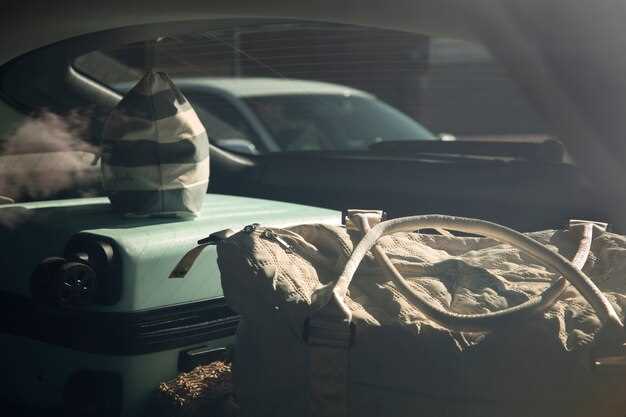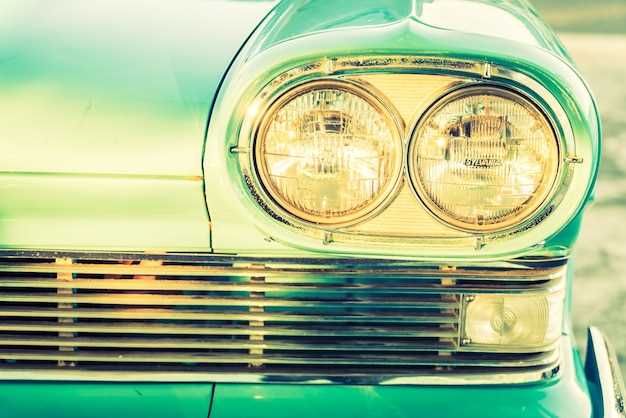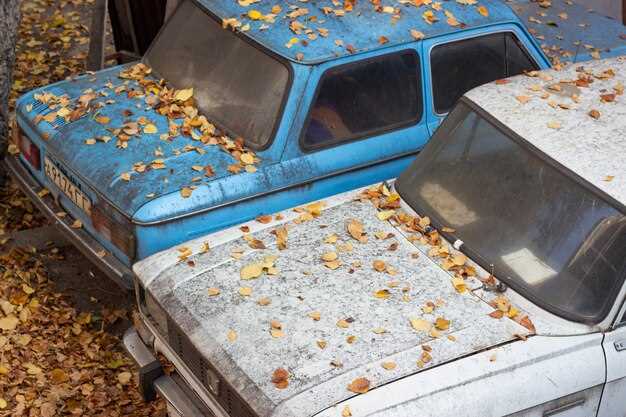
The allure of vintage American cars from the 1970s is undeniable. Enthusiasts and collectors alike are drawn to the distinctive designs and engineering of this iconic era. However, as these vehicles age, sourcing the right parts becomes a challenging endeavor, especially for rarer models that may not have had mass production.
To successfully restore or maintain a classic 1970s automobile, one must navigate a complex landscape of potential sources for parts. Original equipment manufacturer (OEM) parts can often be hard to find, leading enthusiasts to explore various avenues, from salvage yards to online marketplaces. Each method presents its own set of benefits and drawbacks.
Collectors often find that connecting with specialized communities can yield invaluable leads on rare components. Networking within these circles not only increases the chances of finding elusive parts, but also fosters a shared passion for preserving automotive history. Embracing this vintage culture is essential for anyone looking to keep their 1970s car on the road, ensuring that these remarkable vehicles continue to be celebrated and appreciated for years to come.
Utilizing Online Marketplaces for Hard-to-Find Components
In the pursuit of restoring vintage 1970s American cars, finding rare parts often presents a formidable challenge. Online marketplaces have emerged as valuable resources for enthusiasts looking to secure these elusive components. Platforms such as eBay, Craigslist, and specialized auto parts websites facilitate access to a broad range of items, allowing collectors to connect with sellers worldwide.
When searching for specific parts, it is crucial to refine your approach. Start by using precise keywords related to the exact component you need. Including terms like “vintage” or the specific make and model of your vehicle can yield more relevant results. Additionally, joining dedicated online forums or groups can provide insights and referrals to sellers who specialize in rare components.
Take advantage of the filtering options available on these marketplaces. Categories often include condition, price range, and location, which can help narrow down your search effectively. Always review seller ratings and feedback to ensure a reliable transaction. Engaging with reputable sellers not only enhances the likelihood of acquiring quality parts but also aids in building a network of contacts for future restoration projects.
Don’t overlook the potential of social media platforms. Many vintage car enthusiasts share listings or even host sales events through groups or pages dedicated to classic cars. This community-focused approach can lead to discovering unique parts that may not be listed on more traditional marketplaces.
While securing rare parts online can be a rewarding endeavor, be prepared for potential pitfalls. Delays in shipping, discrepancies in product descriptions, or non-functioning parts may occur. Always communicate clearly with sellers, asking for additional photos or detailed descriptions when necessary. This diligence can help mitigate the risks associated with purchasing hard-to-find components for your vintage 1970s automobile.
Connecting with Vintage Car Enthusiasts and Clubs for Resources

Finding rare parts for 1970s American cars can be a daunting task, but connecting with vintage car enthusiasts and clubs can significantly enhance your chances of sourcing these elusive components. These communities are often rich with knowledge, connections, and resources that can guide you in your search.
Local car clubs provide an excellent platform to meet like-minded individuals who share your passion for classic automobiles. Members frequently exchange information about where to locate rare parts, swap their own spare components, or refer you to trusted sellers. Networking within these groups can lead to valuable leads that are not typically available through standard channels.
Online forums and social media groups dedicated to vintage cars are another vital resource. They serve as a marketplace for enthusiasts looking to buy, sell, or trade parts. Engaging with fellow members allows you to ask specific questions about hard-to-find components, leading to recommendations for specialized shops or private collectors who may have the parts you need.
Participating in vintage car shows and events also opens up opportunities for connection. These gatherings attract enthusiasts from various backgrounds and can be a goldmine for sourcing rare parts directly from other collectors. Bringing your own spare parts to trade can increase your chances of finding what you’re looking for.
Moreover, many clubs organize parts swaps or annual meets specifically aimed at exchanging hard-to-find items. Joining these events not only enhances your chances of securing rare parts but also fosters a sense of community and camaraderie among fellow car collectors.
In summary, linking up with vintage car enthusiasts and clubs is an invaluable strategy for finding rare parts. By tapping into community knowledge, utilizing online platforms, and participating in local events, you’ll be well-equipped in your quest for those elusive components that keep your classic American vehicle on the road.
Exploring Local Junkyards and Salvage Yards for Unique Finds

For enthusiasts of vintage American cars from the 1970s, local junkyards and salvage yards serve as a treasure trove of rare parts. These locations often hold a variety of vehicles that have long since been retired from the road, making them an ideal source for hard-to-find components. With a bit of exploration and patience, you can discover unique items that can restore your classic car to its former glory.
One of the biggest advantages of searching in junkyards is the accessibility to a wide range of vintage parts at a fraction of the cost compared to new replacements. Many salvage yards allow you to roam freely, enabling you to closely inspect each vehicle for items that match your needs. Look for cars that are similar to your model, as they may have interchangeable parts that are essential for restoration projects.
It’s important to go prepared when visiting these locations. Bring tools to remove parts, wear comfortable clothing, and don’t forget to carry a flashlight to check dark corners of the vehicles. Create a checklist of the specific parts you need to increase your chances of finding exactly what you’re looking for. Additionally, don’t hesitate to ask the staff if they know of any upcoming shipments or recently acquired vehicles, as they may have insider knowledge that can guide your search.
Furthermore, developing relationships with the staff at these yards can lead to helpful tips about sourcing hard-to-find parts. They may also inform you about upcoming auctions or sales where you might uncover more rare items. Many junkyards also have online databases or social media pages showcasing their inventory, which can help you plan your visits effectively.
In conclusion, exploring local junkyards and salvage yards is a rewarding adventure for anyone looking to restore a 1970s American car. With a keen eye and a bit of determination, you can uncover unique finds that will not only save you money but also contribute to the authenticity of your vintage automobile project.












